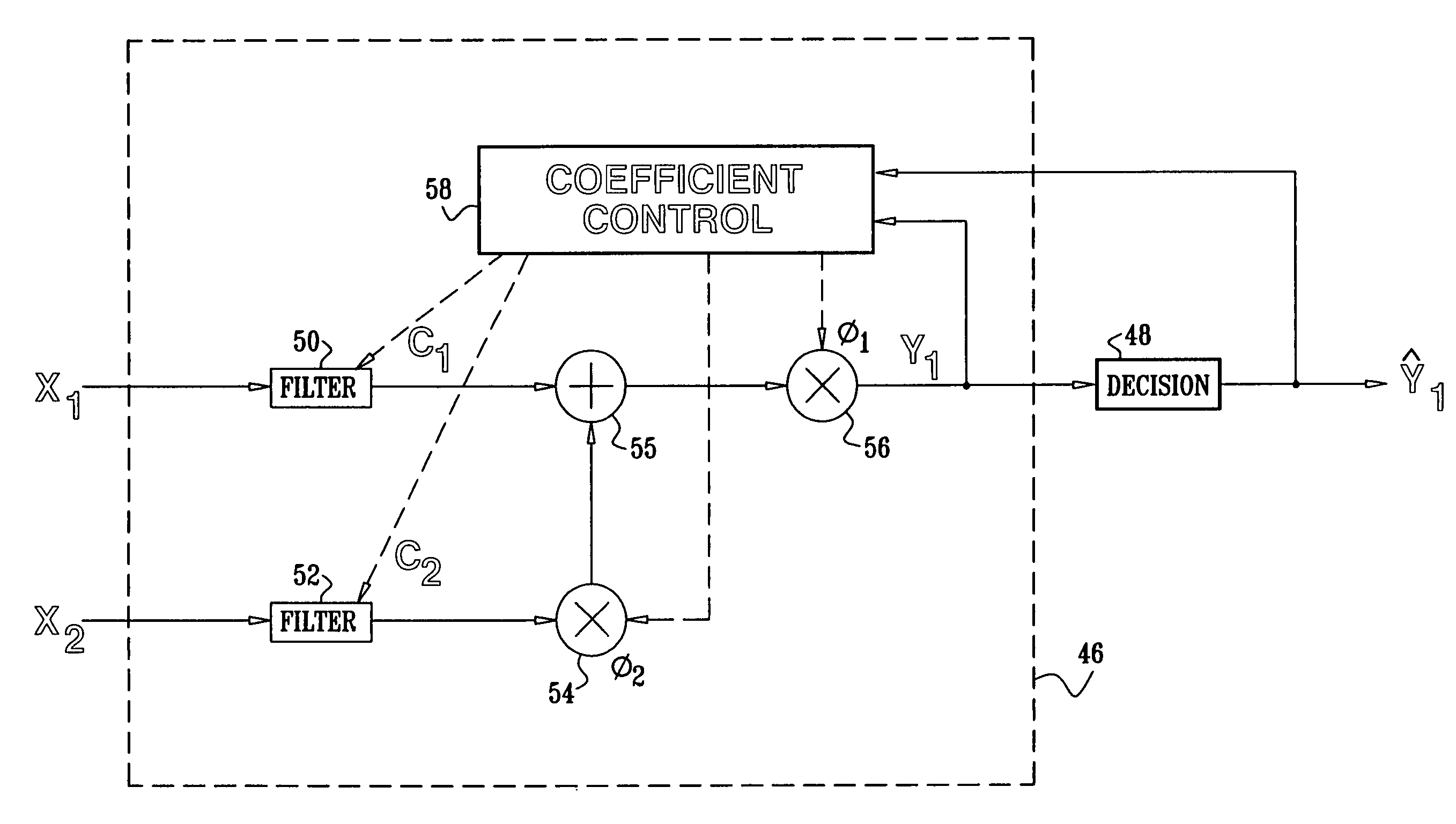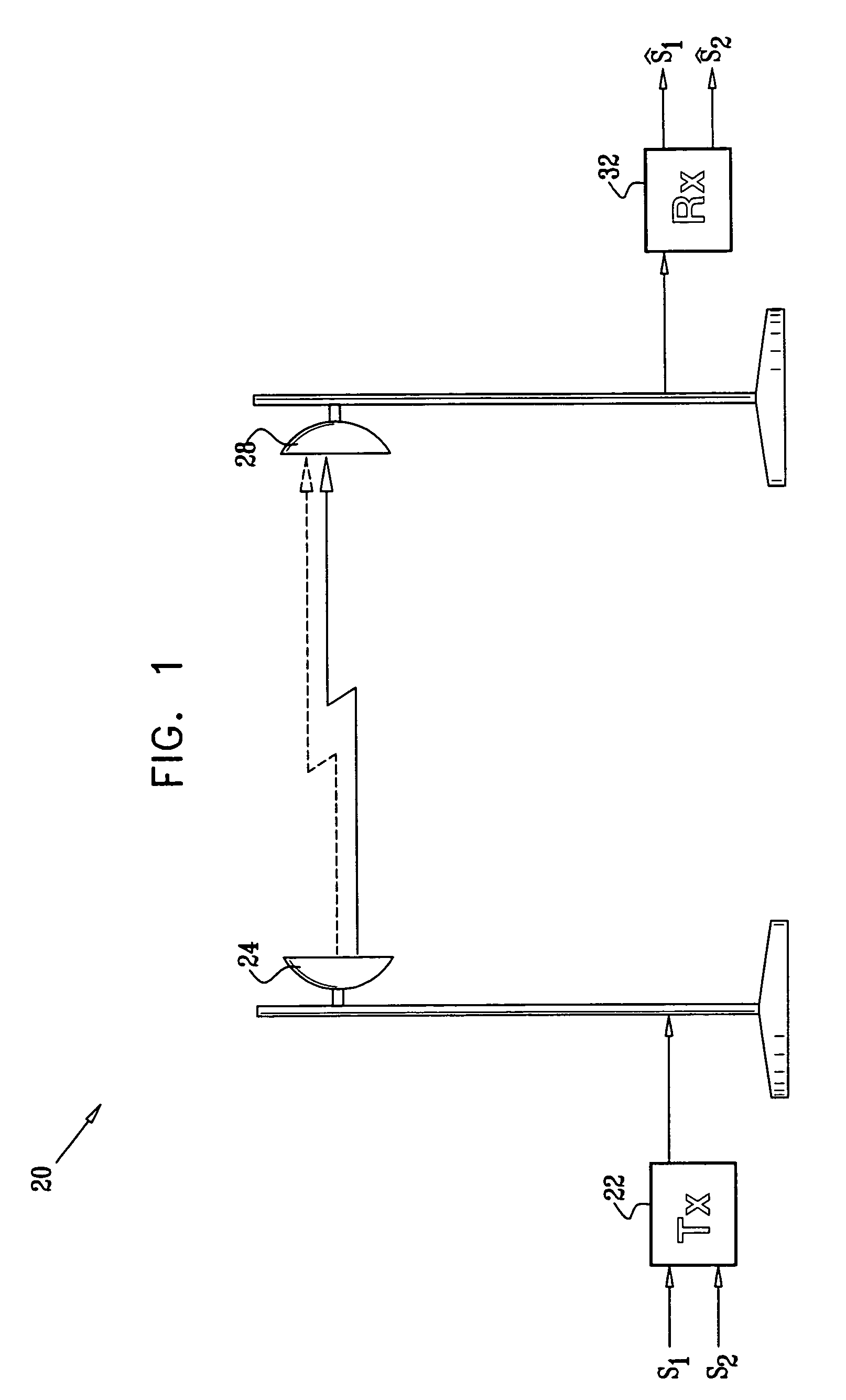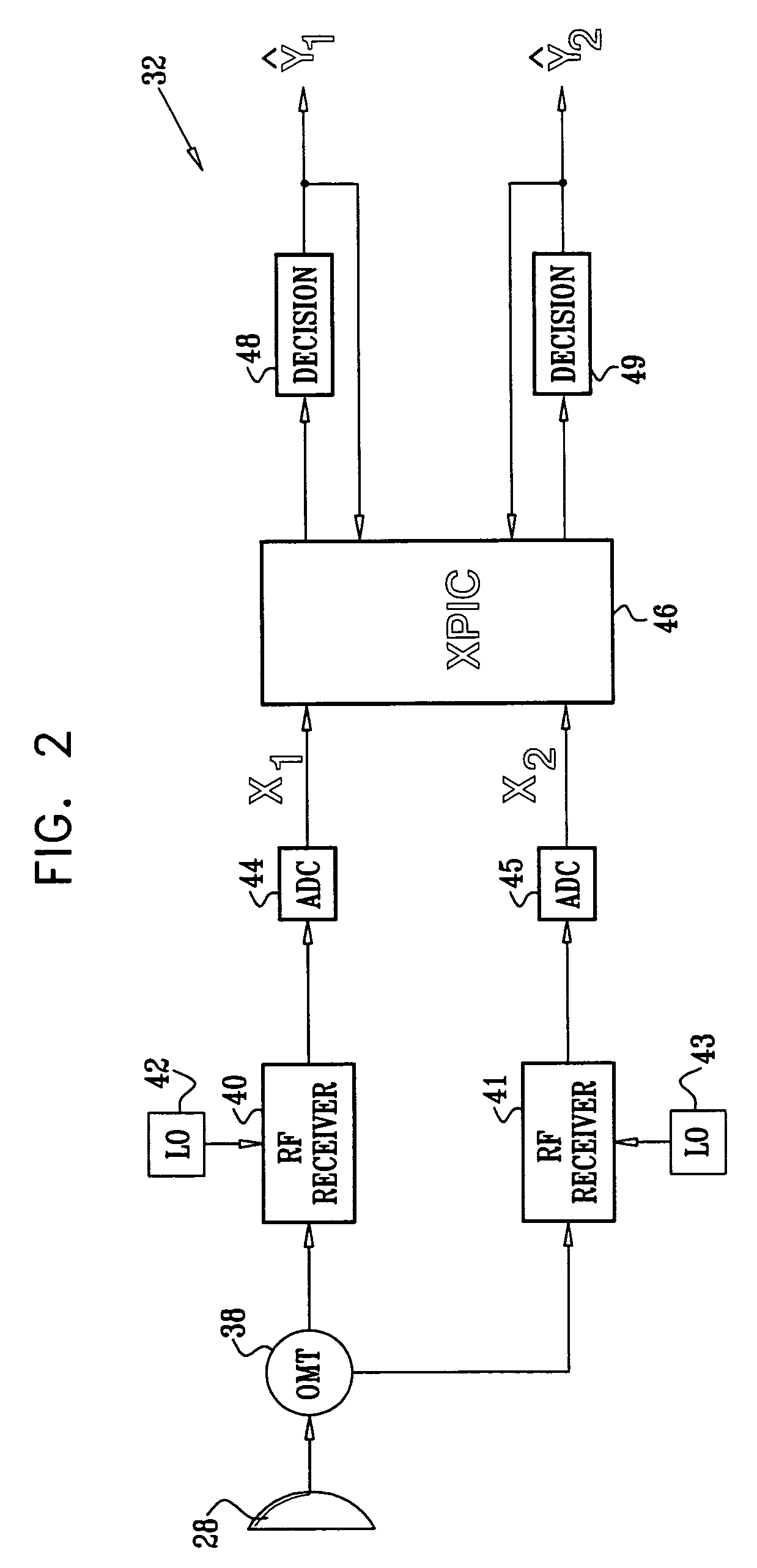Interference canceller with fast phase adaptation
a phase adaptation and interference canceller technology, applied in the field of wireless communication, can solve the problem of almost inevitable interference between signals, and achieve the effect of reducing interference between transmission channels
- Summary
- Abstract
- Description
- Claims
- Application Information
AI Technical Summary
Benefits of technology
Problems solved by technology
Method used
Image
Examples
Embodiment Construction
[0063]FIG. 1 is a block diagram that schematically illustrates a wireless data transmission system 20, in accordance with a preferred embodiment of the present invention. System 20 comprises a transmitter 22, which is coupled to transmit signals s1 and s2 over the air via a transmit antenna 24. Typically, s1 and s2 carry streams of digital data, which are converted to data symbols by transmitter 22 according to a suitable modulation scheme, and are then upconverted to a predetermined radio frequency (RF) range for transmission, as is known in the art. Transmitter 22 and antenna 24 are configured to transmit s1 and s2 on orthogonally-polarized transmission channels. For example, the antenna may transmit s1 with vertical polarization and s2 with horizontal polarization. Alternatively, the signals may be transmitted with clockwise and counterclockwise circular polarizations. Further alternatively, separate transmit antennas (and / or separate received antennas) may be used for the two po...
PUM
 Login to View More
Login to View More Abstract
Description
Claims
Application Information
 Login to View More
Login to View More - R&D
- Intellectual Property
- Life Sciences
- Materials
- Tech Scout
- Unparalleled Data Quality
- Higher Quality Content
- 60% Fewer Hallucinations
Browse by: Latest US Patents, China's latest patents, Technical Efficacy Thesaurus, Application Domain, Technology Topic, Popular Technical Reports.
© 2025 PatSnap. All rights reserved.Legal|Privacy policy|Modern Slavery Act Transparency Statement|Sitemap|About US| Contact US: help@patsnap.com



